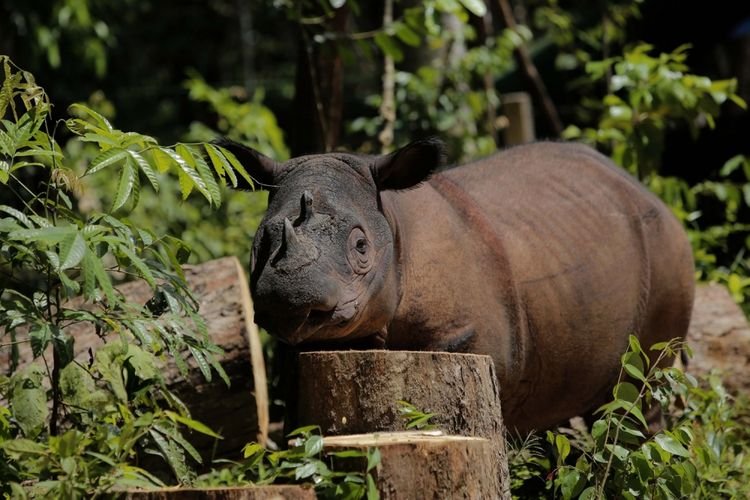
Until now, Sumatran rhinoceros became one of the species that threatened its existence on earth. In 2008, researchers estimated that the population lived in the range of 220 to 275 only.
their status on the official website of the International Union for Conservation of Nature (IUCN) has not changed, is still endangered or endangered, and population trends continue to decline.
Ironically, the fate of this hairy rhino was not much different from his life in the past 10.000 years ago.
A study published in the journal Current Biology, Thursday (14/12/2017) explained that rhinoceros has been faced with a phase of extinction since 10,000 years ago .
"This species has been in a phase of extinction for a very long time," said Terri Roth, rhinoceros from the Center for Conservation and Research of Endangered Species Species zoo in Cincinnati, USA.
the results are based on genetic analysis of Sumatran rhinoceros DNA named Ipuh who lived in the Cincinnati Zoo for 22 years.
the team used a technique called Pairwise Sequential Markovian Coalescent (PSMC) modeling, enabling them to estimate populations of species that span thousands of generations by just sequencing genes from one individual alone.
using Ipuh DNA samples, the team compared the results with fossil and climatic data to collect a picture of the fate of the Sumatran rhinoceros over the last few million years.
According to the data, the species reached the peak of the population about 950,000 years ago, and the number reached about 57,800 species.
However, the number of populations experienced ups and downs during the Ice Age, which lasted from about 2.6 million years ago to about 12,000 years ago.
"Our genomic sequence data reveal if the Ice Age became an age of rise and fall of the Sumatran rhino population," said Herman Mays, Jr., another researcher from Marshall University.
Based on research, the main causes of population decline have to do with climate change in the past.
researchers revealed if there is a sea level rise that soaks the land that connects the islands of Borneo, Java and Sumatra with the Malay Peninsula and mainland Asia. This resulted in the rupture of the rhinoceros habitat.
The impact, the reduced genetic diversity of Sumatran rhinoceros due to geographical isolation that makes them more vulnerable to threats from human activities such as deforestation and poaching.
that is why, towards the end of the ice age about 9000 years ago, the number of Sumatran rhinos decreased drastically to only leaving about 700 species only. This bleak condition continues today.
"Their populations are low and never show any improvement," Mays added.
Expectation to increase the population of Sumatran rhinos continues to be cultivated by breeding. Indonesia itself managed to breed the rhino and give birth Andatu who became the first rhino born in captivity in Indonesia in 2012 ago.
But that is not enough. We are still chasing with time to find another way to save the rhinoceros.
one of the problems is about the breeding is fairly slow. Females do not reach the level of sexual maturity until the age of 6 or 7 years, while the new males reach the level of sexual maturity at the age of 10 years.
then, females only marry once every four or five years, and their pregnancy periods for 16 months. After that, the rhinoceros will stay with their mother for two to three years.
If the Sumatran rhino is extinct, it means that the whole genus is extinct.
The article, the Sumatran rhino is the only species of the genus Dicerorhinus that can survive until now. This genus is the most primitive group that evolved from 15 million years to 20 million years ago.
Your Post Are Awesme Keepit up Bro And Share Your Best Skills With US